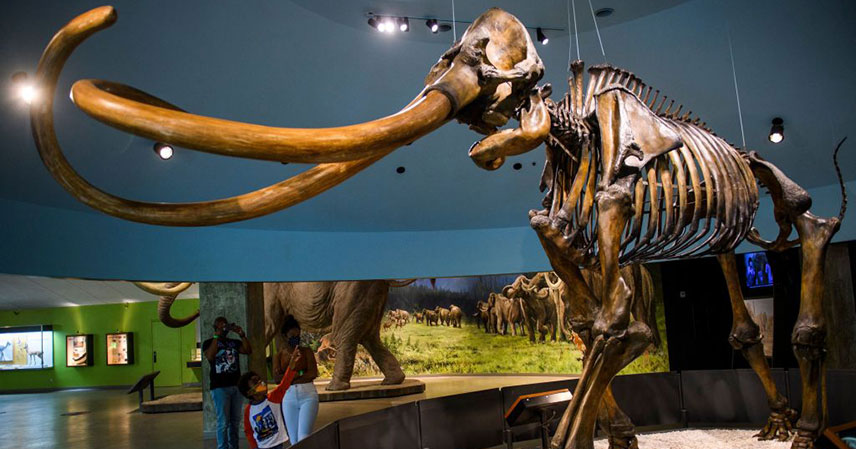For years, we’ve painted a broad picture of mammoths – colossal, hairy creatures roaming icy landscapes. But the reality is far more nuanced. Recent discoveries are challenging our understanding of these prehistoric giants, revealing a surprising level of diversity and challenging previously held genetic relationships. This exciting new research sheds light on a previously unknown mammoth population, adding another layer to the complex tapestry of mammoth evolution.
While we often think of mammoths as a single species, the truth is far more intricate. Several mammoth species existed, each adapting to different environments and climates. This new research focuses on the Columbian mammoth, a species previously thought to be closely related to either the steppe mammoth or a hybrid of steppe and woolly mammoths. The recent discovery in Mexico dramatically alters this assumption.
What Happened? 📝
A team of researchers successfully extracted genetic material from mammoth bones discovered in the Basin of Mexico. This is a significant breakthrough because previous genetic studies primarily relied on specimens from colder regions, such as the Arctic. The Mexican mammoth remains provide a crucial insight into a population living in a much warmer climate. This is exciting because it allows scientists to study a population living outside of the previously known range of Columbian mammoths.
The analysis of this newly obtained DNA reveals a fascinating story. The Mexican mammoths form a distinct genetic cluster, separate from both the woolly and previously understood Columbian mammoths. This suggests a previously unknown mammoth lineage, potentially representing a unique species altogether. The implications of this discovery are far-reaching, challenging existing evolutionary models and highlighting the complexity of mammoth diversification.
The Columbian Mammoth Enigma 🧐
The Columbian mammoth (Mammuthus columbi) has long been a source of debate among paleontologists. Its genetic relationship to other mammoth species, particularly the steppe mammoth (Mammuthus trogontherii) and the woolly mammoth (Mammuthus primigenius), has been unclear. Previous genetic studies yielded conflicting results, with some suggesting a close relationship to the steppe mammoth, others pointing towards a hybrid origin.
The difficulty in resolving this enigma stems from the limited availability of genetic material from warmer regions. Most previous studies focused on specimens found in colder climates, where preservation is often better. The Mexican discovery provides crucial data from a warmer climate, offering a much-needed perspective on Columbian mammoth evolution and population structure. This new data shows that the previously understood Columbian mammoths are not as homogenous as previously thought.
The Significance of the Mexican Discovery 🇲🇽
The discovery of this distinct genetic cluster of mammoths in Mexico is incredibly significant for several reasons. Firstly, it expands our understanding of mammoth diversity, revealing a previously unknown lineage that thrived in a temperate climate. This challenges the long-held assumption that mammoths were primarily confined to colder environments.
Secondly, it highlights the importance of studying fossils from diverse geographical locations. By expanding the scope of research beyond the traditional focus on Arctic specimens, we gain a more complete and accurate picture of mammoth evolution. This discovery demonstrates the power of studying fossils from various climates and geographic locations to piece together the bigger picture of evolution.
Key Takeaways 🔑
- Genetic analysis of mammoth remains from Mexico reveals a distinct genetic cluster, suggesting a new mammoth species or lineage.
- This discovery challenges previous understandings of Columbian mammoth relationships and expands our knowledge of mammoth diversity.
- The research highlights the importance of studying fossils from diverse geographical locations to gain a more complete understanding of prehistoric life.
- The Mexican mammoths lived in a warmer climate than previously studied mammoth populations, expanding the known range of mammoth habitats.
- This discovery necessitates a reassessment of current mammoth evolutionary models and phylogenetic trees.
The discovery of this new mammoth lineage in Mexico is a testament to the ongoing power of paleontological research. It reminds us that our understanding of the past is constantly evolving, much like the recent discovery of a Maya king’s tomb, and that new finds can dramatically reshape our understanding of prehistoric life. Further research is needed to fully characterize this new lineage and its place in the broader mammoth evolutionary story. This discovery is sure to fuel further exciting research into the lives and evolution of mammoths.



